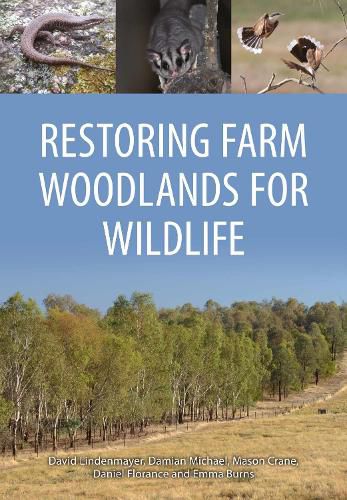Readings Newsletter
Become a Readings Member to make your shopping experience even easier.
Sign in or sign up for free!
You’re not far away from qualifying for FREE standard shipping within Australia
You’ve qualified for FREE standard shipping within Australia
The cart is loading…






Millions of hectares of temperate woodland and billions of trees have been cleared from Australia’s agricultural landscapes. This has allowed land to be developed for cropping and grazing livestock but has also had significant environmental impacts, including erosion, salinity and loss of native plant and animal species.
Restoring Farm Woodlands for Wildlife focuses on why restoration is important and describes best practice approaches to restore farm woodlands for birds, mammals and reptiles. Based on 19 years of long-term research in temperate agricultural south-eastern Australia, this book addresses practical questions such as what, where and how much to plant, ways to manage plantings and how plantings change over time. It will be a key reference for farmers, natural resource management professionals and policy-makers concerned with revegetation and conservation.
$9.00 standard shipping within Australia
FREE standard shipping within Australia for orders over $100.00
Express & International shipping calculated at checkout
Millions of hectares of temperate woodland and billions of trees have been cleared from Australia’s agricultural landscapes. This has allowed land to be developed for cropping and grazing livestock but has also had significant environmental impacts, including erosion, salinity and loss of native plant and animal species.
Restoring Farm Woodlands for Wildlife focuses on why restoration is important and describes best practice approaches to restore farm woodlands for birds, mammals and reptiles. Based on 19 years of long-term research in temperate agricultural south-eastern Australia, this book addresses practical questions such as what, where and how much to plant, ways to manage plantings and how plantings change over time. It will be a key reference for farmers, natural resource management professionals and policy-makers concerned with revegetation and conservation.